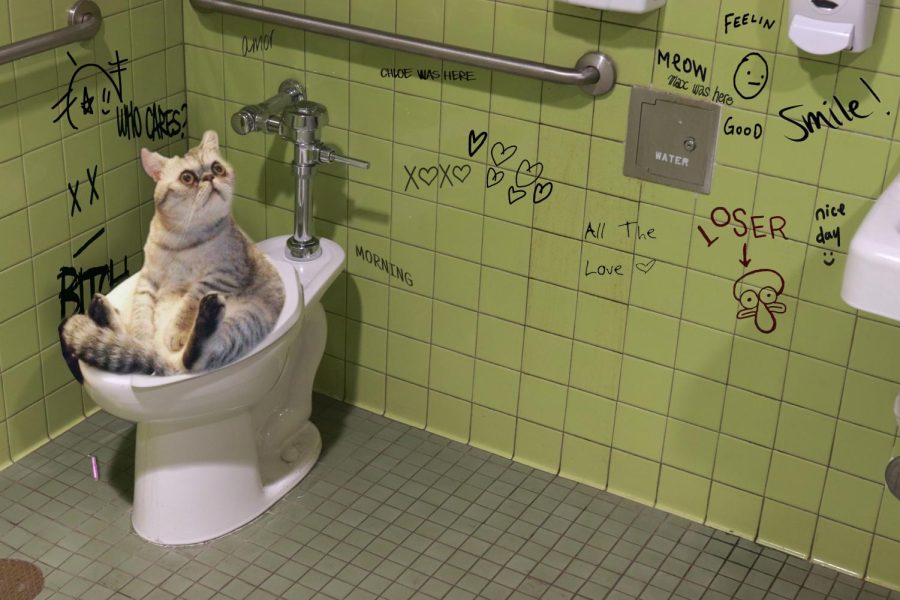Reasons You Mustn't Flush Cat Poop Down Your Toilet - Preserve Your Pipe Health
Reasons You Mustn't Flush Cat Poop Down Your Toilet - Preserve Your Pipe Health
Blog Article
How do you actually feel when it comes to Don’t flush cat feces down the toilet?

Introduction
As feline proprietors, it's essential to be mindful of exactly how we take care of our feline buddies' waste. While it may appear hassle-free to flush feline poop down the bathroom, this technique can have detrimental repercussions for both the setting and human health.
Alternatives to Flushing
The good news is, there are safer and much more accountable means to deal with feline poop. Consider the complying with options:
1. Scoop and Dispose in Trash
One of the most usual method of getting rid of feline poop is to scoop it right into an eco-friendly bag and toss it in the garbage. Be sure to use a devoted trash scoop and deal with the waste quickly.
2. Use Biodegradable Litter
Select naturally degradable feline trash made from products such as corn or wheat. These trashes are eco-friendly and can be securely taken care of in the garbage.
3. Hide in the Yard
If you have a lawn, think about burying cat waste in a designated location far from veggie yards and water resources. Make sure to dig deep sufficient to prevent contamination of groundwater.
4. Mount a Pet Waste Disposal System
Buy a family pet waste disposal system specifically designed for cat waste. These systems make use of enzymes to break down the waste, lowering smell and ecological impact.
Health Risks
Along with ecological worries, flushing pet cat waste can additionally present health and wellness risks to human beings. Feline feces may contain Toxoplasma gondii, a bloodsucker that can trigger toxoplasmosis-- a potentially extreme health problem, especially for pregnant females and people with weakened immune systems.
Ecological Impact
Flushing cat poop presents dangerous pathogens and bloodsuckers into the water supply, presenting a significant danger to aquatic ecosystems. These impurities can adversely affect aquatic life and compromise water top quality.
Final thought
Responsible family pet ownership prolongs beyond supplying food and shelter-- it likewise includes proper waste monitoring. By refraining from purging cat poop down the bathroom and opting for different disposal methods, we can lessen our environmental impact and protect human wellness.
Why Can’t I Flush Cat Poop?
It Spreads a Parasite
Cats are frequently infected with a parasite called toxoplasma gondii. The parasite causes an infection called toxoplasmosis. It is usually harmless to cats. The parasite only uses cat poop as a host for its eggs. Otherwise, the cat’s immune system usually keeps the infection at low enough levels to maintain its own health. But it does not stop the develop of eggs. These eggs are tiny and surprisingly tough. They may survive for a year before they begin to grow. But that’s the problem.
Our wastewater system is not designed to deal with toxoplasmosis eggs. Instead, most eggs will flush from your toilet into sewers and wastewater management plants. After the sewage is treated for many other harmful things in it, it is typically released into local rivers, lakes, or oceans. Here, the toxoplasmosis eggs can find new hosts, including starfish, crabs, otters, and many other wildlife. For many, this is a significant risk to their health. Toxoplasmosis can also end up infecting water sources that are important for agriculture, which means our deer, pigs, and sheep can get infected too.
Is There Risk to Humans?
There can be a risk to human life from flushing cat poop down the toilet. If you do so, the parasites from your cat’s poop can end up in shellfish, game animals, or livestock. If this meat is then served raw or undercooked, the people who eat it can get sick.
In fact, according to the CDC, 40 million people in the United States are infected with toxoplasma gondii. They get it from exposure to infected seafood, or from some kind of cat poop contamination, like drinking from a stream that is contaminated or touching anything that has come into contact with cat poop. That includes just cleaning a cat litter box.
Most people who get infected with these parasites will not develop any symptoms. However, for pregnant women or for those with compromised immune systems, the parasite can cause severe health problems.
How to Handle Cat Poop
The best way to handle cat poop is actually to clean the box more often. The eggs that the parasite sheds will not become active until one to five days after the cat poops. That means that if you clean daily, you’re much less likely to come into direct contact with infectious eggs.
That said, always dispose of cat poop in the garbage and not down the toilet. Wash your hands before and after you clean the litter box, and bring the bag of poop right outside to your garbage bins.
https://trenchlesssolutionsusa.com/why-cant-i-flush-cat-poop/

I'm just very interested in How to Dispose of Cat Poop and Litter Without Plastic Bags and I hope you appreciated my post. Feel free to take the opportunity to distribute this post if you enjoyed reading it. Thank you for your time. Please pay a visit to our blog back soon.
Click Here Report this page